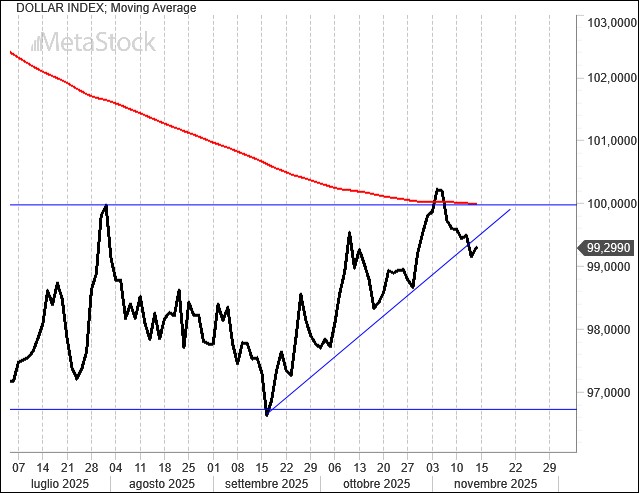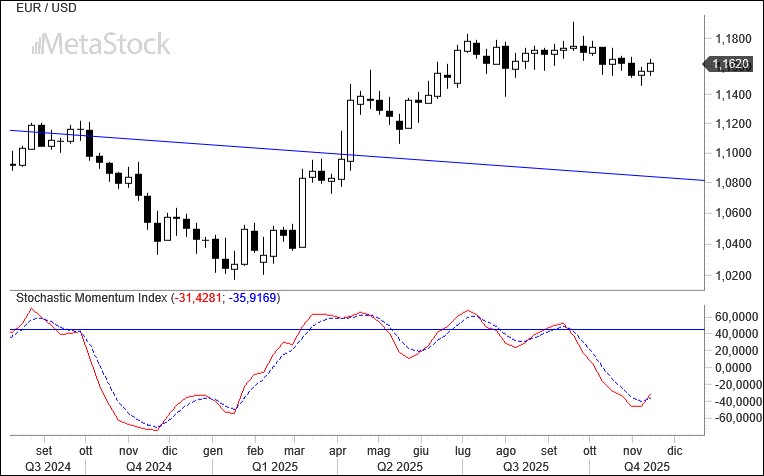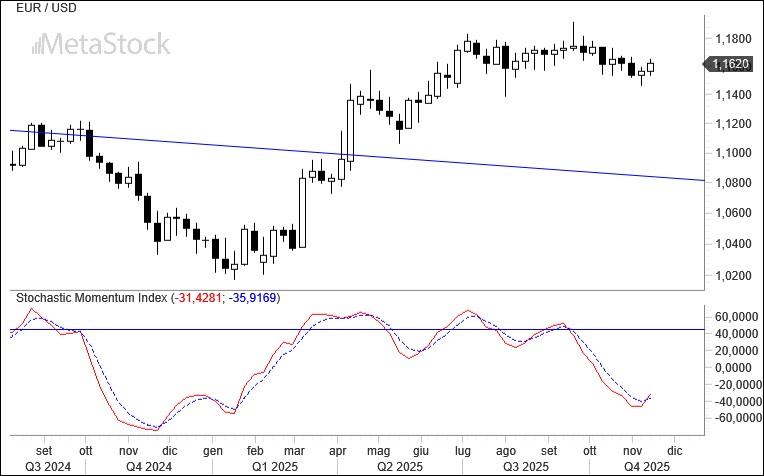- The United States has wrapped up the longest government shutdown in its history, turning market attention back to the economy and to what the Federal Reserve may do next. With growth and employment likely dented, rate cuts are back on the table, even if Fed officials continue to send mixed signals.
- Europe offers few major data points this week aside from a disappointing German ZEW index, which slipped below expectations. The outlook for ECB policy remains unchanged, with rates set to stay at 2 percent.
- EUR/USD barely moved, underscoring the strength of support at the 1.15 area. Markets now look to the gradual release of U.S. data to gauge where the pair might head next.
The Fed Might Cut Rates, Or Not
Thanksgiving appears to be safe for now. The end of the shutdown, signed off by Donald Trump, means federal operations will reopen, government workers can return to their posts, and food assistance for low-income households, frozen in recent weeks, will finally resume.
For investors, the focus now shifts to the macroeconomic figures that have been missing for weeks. Labor market data, in particular, are expected to show strain, reflecting the inactivity of several federal agencies and the spillover effects on the private sector.
The Federal Reserve will also return to full speed, parsing every economic signal ahead of the next FOMC meeting. A rate cut is possible, unless November inflation surprises to the upside. But many central bank officials, along with futures markets pricing only a 50% probability of easing, have hinted the Fed may prefer to wait.
Despite the policy uncertainty, equity markets remained steady, with a noticeable sector rotation underway: pharmaceuticals and value stocks are regaining ground at the expense of growth names.
In Europe, nothing has changed. The latest German ZEW index offered little encouragement but is not expected to alter the ECB’s stance. Rates should remain on hold at 2 percent. The Bank of England, however, is widely expected to cut in December, following the government’s late-November budget presentation, as the UK economy continues to soften.
EURUSD Technical Analysis: A Flat Market
A look at the Dollar Index, tracking the greenback against major global currencies, with the euro carrying the most weight, shows that the dollar’s recent rebound fizzled just as it appeared ready to turn into something more meaningful.
The June–September double bottom seemed on the verge of confirming itself, potentially opening the door to a 3–4% rally. Instead, the move stalled. What we’re seeing now looks increasingly like a bull trap, with resistance at the 100 level proving once again impenetrable. A return to the lower end of the range is no longer unlikely.

EUR/USD held comfortably above first-line support at 1.15, a notable sign, especially in a seasonally strong period for the dollar.
Technical oscillators have reset, and attention is turning to the gradual resumption of futures market data to gauge net long and short positioning among speculators and arbitrageurs. Bearish sentiment toward the dollar has clearly eased, which may give the euro an opening to push higher.
Meanwhile, the Stochastic Momentum Index is flashing bullish signals on the weekly chart, suggesting EUR/USD may attempt another climb toward the 1.18–1.19 area, where the pair previously met its first layer of resistance.



Leave a Reply
You must be logged in to post a comment.